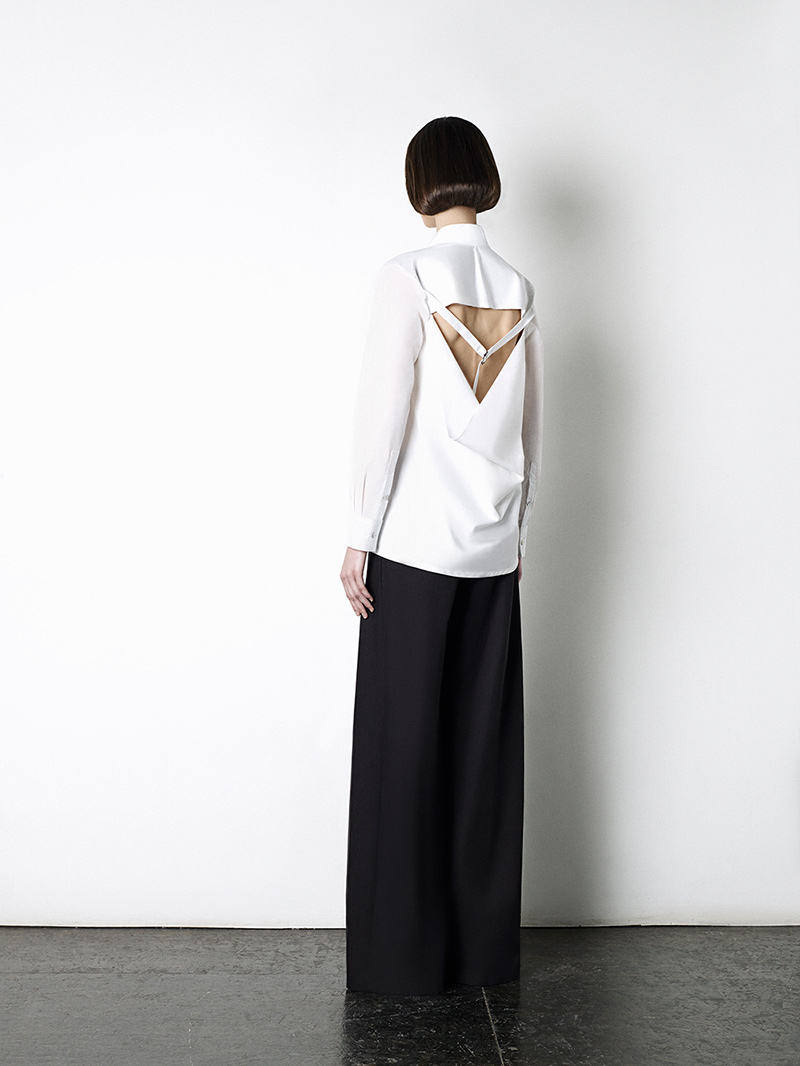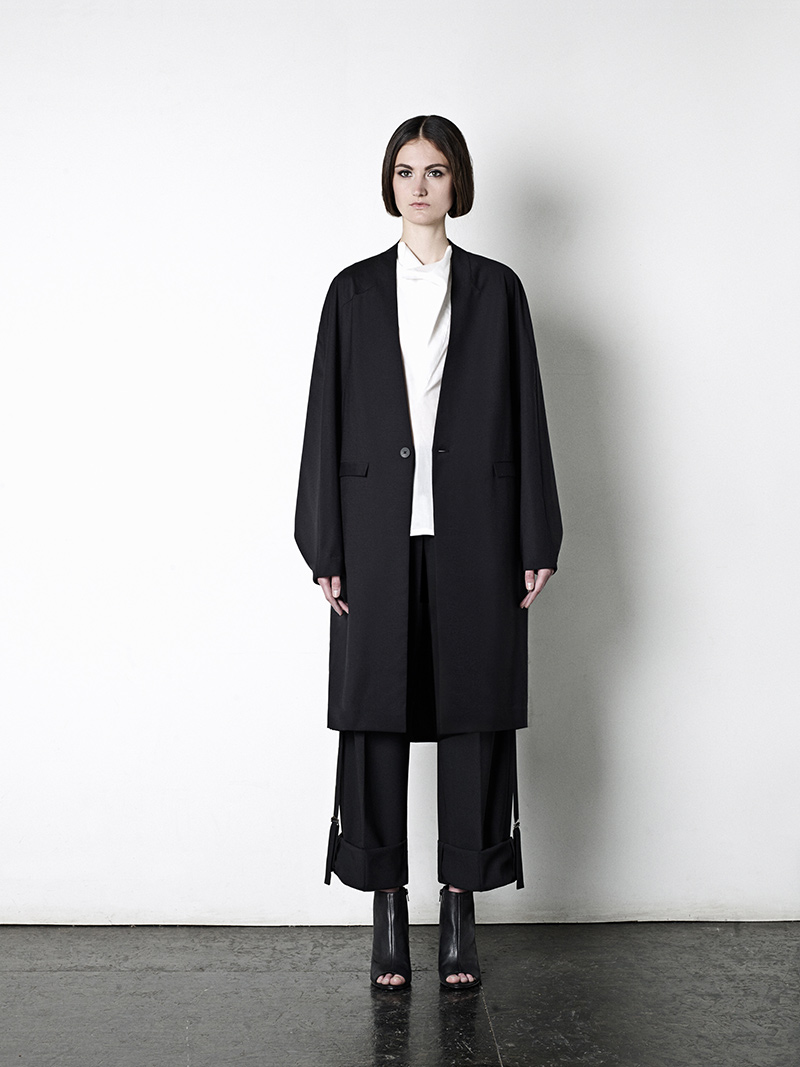Unlike many aspiring designers, Vietnamese-born Tuyen Tran was first drawn to fashion through her interest in the complex, technical processes that go into the construction of garments. She enrolled in a fashion design course offered by the theater department of her high school in Twin Falls, Idaho, but found that it was “not accurate,” she says. “You would learn to use a hot glue gun here, a staple there.”
For a more thorough education in fashion, Tuyen moved to New York to attend Parsons the New School for Design. There, she fell in love with fashion’s long, rich history and the glamour of trying to be “a celebrity designer.”
It had, however, a visible influence on her creativity. “When you try to reach that goal of being known and famous,” Tuyen says, “you end up creating very showy stuff. In my first couple of years, I would keep trying to make clothes that looked cool. Does this please my teacher? Does this please the people who are critiquing my work for this project? But none of that really made me happy.”
Instead, Tuyen switched gears and immersed herself in menswear for a year. She found the change refreshing — menswear design prized technical excellence, durability, and resisted unnecessary embellishments.
When she returned to womenswear, Tuyen brought those sensibilities with her. She stopped creating “showy” designs in favor of sophisticated, pared-down looks — an aesthetic that she was ultimately more at home with. “My parents are really practical people,” Tuyen says, “so crazy was never something that was engineered into my experience. In the end, I create and design clothes that are really practical and simple, and my background has a lot to do with that.”
This practicality is apparent in her creative process. Tuyen views fashion as a form of product design, whose main functions are to “enable movement, adapt to different environments, and most importantly, enhance the wearer’s happiness,” she wrote in an essay.
To better fulfill those functions, Tuyen starts with an idea of the person she is designing for. This was the basis of the “Assemble,” her Parsons thesis collection, which she calls “an ode to identity.” The four looks are based on various roles — the scholar, artist, traveler, and socialite — who each have distinct desires and experiences. The traveller, for example, “crafts tangents, and dresses for mobility and in preparation for unexpected outcomes.” The look designed for the traveler, then, comes with tension trousers that can be easily adjusted in length, and a storm coat that is lightweight but protects against extreme weather.
The pieces in “Assemble” also reflect Tuyen’s commitment to sustainability. Inspired by Timo Rissanen, a professor at Parsons, Tuyen strives, whenever possible, to design with pure, organic fibers that are easier to biodegrade or recycle than synthetic fibers. She also aims to build longevity into the fabric of her designs: She creates garments that are adjustable as well as beautiful, in the hopes that they will grow with wearers over time, and become indispensable.
The youngest winner of the Vilcek Prize for Creative Promise to date, Tuyen just completed her BFA at Parsons in May 2014. She is currently building upon her experience as a freelance designer for J.Crew, where she works with the outerwear department and assists with various production processes for the label. “It’s more of the technical stuff you don’t learn in school,” she says.
Are you a scholar, artist, traveler, or socialite?
The Scholar
The Scholar crafts knowledge, exists within the space between work and non-work, and dresses for comfort and immediacy:
1. Shift dress – easily slips on, with pockets to rest hands.
2. Trim vest – with interior and exterior pockets to hold wallet and tools of learning.
The Artist
The Artist crafts reflections of society, acts as a canvas, and dresses to exercise freedom of expression:
1. Wrap trousers – embraces the wearer.
2. Clasp shirt – an iteration of the button front shirt, minus its formal connotations.
The Traveler
The Traveler crafts tangents, and dresses for mobility and in preparation for unexpected outcomes:
1. Kerchief shirt – easily slips on without closures.
2. Tension trousers – can adjust in length in accordance to terrain.
3. Storm coat – lightweight, with flap to keep the body dry and protect from extreme weather.
The Socialite
The Socialite crafts experience, thrives in the company of others, and dresses to achieve personal freedom and joy:
1. Arch coat – with pockets to rest hands.
2. Clutch vest – backless, with strapped neck; a wearable set of exterior pockets that acts in place of a clutch to keep personal items with the wearer at all times.




